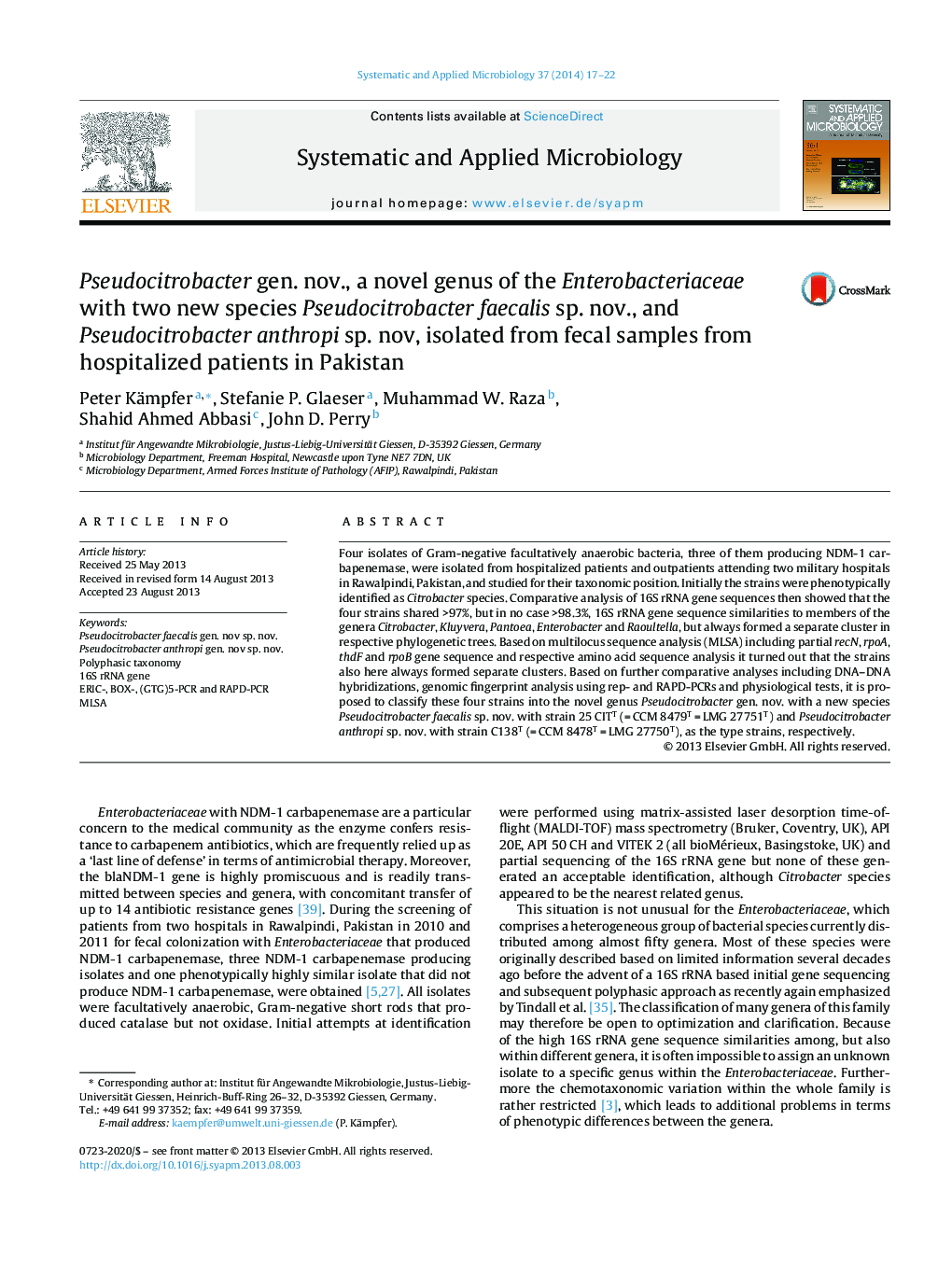| Article ID | Journal | Published Year | Pages | File Type |
|---|---|---|---|---|
| 10879397 | Systematic and Applied Microbiology | 2014 | 6 Pages |
Abstract
Four isolates of Gram-negative facultatively anaerobic bacteria, three of them producing NDM-1 carbapenemase, were isolated from hospitalized patients and outpatients attending two military hospitals in Rawalpindi, Pakistan, and studied for their taxonomic position. Initially the strains were phenotypically identified as Citrobacter species. Comparative analysis of 16S rRNA gene sequences then showed that the four strains shared >97%, but in no case >98.3%, 16S rRNA gene sequence similarities to members of the genera Citrobacter, Kluyvera, Pantoea, Enterobacter and Raoultella, but always formed a separate cluster in respective phylogenetic trees. Based on multilocus sequence analysis (MLSA) including partial recN, rpoA, thdF and rpoB gene sequence and respective amino acid sequence analysis it turned out that the strains also here always formed separate clusters. Based on further comparative analyses including DNA-DNA hybridizations, genomic fingerprint analysis using rep- and RAPD-PCRs and physiological tests, it is proposed to classify these four strains into the novel genus Pseudocitrobacter gen. nov. with a new species Pseudocitrobacter faecalis sp. nov. with strain 25 CITT (=Â CCM 8479TÂ =Â LMG 27751T) and Pseudocitrobacter anthropi sp. nov. with strain C138T (=Â CCM 8478TÂ =Â LMG 27750T), as the type strains, respectively.
Keywords
Related Topics
Life Sciences
Agricultural and Biological Sciences
Ecology, Evolution, Behavior and Systematics
Authors
Peter Kämpfer, Stefanie P. Glaeser, Muhammad W. Raza, Shahid Ahmed Abbasi, John D. Perry,
